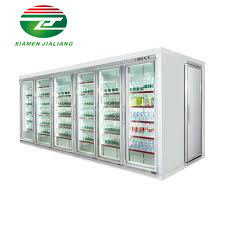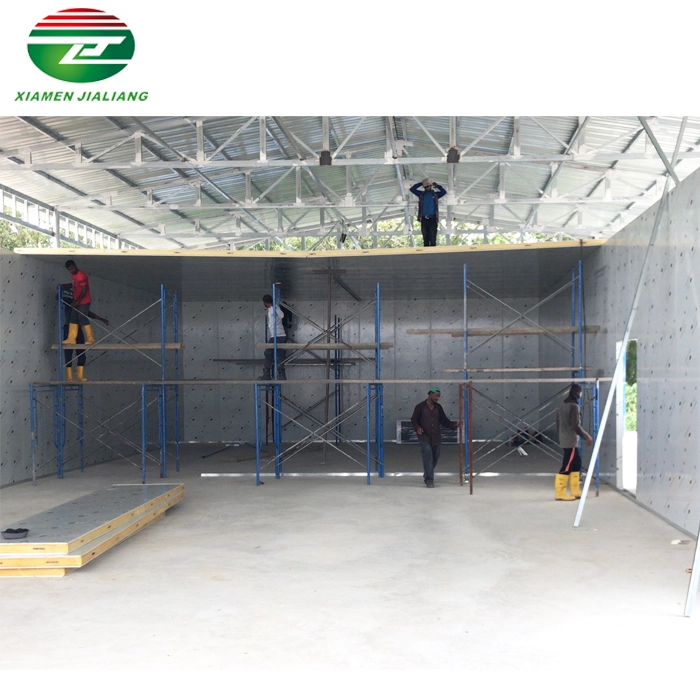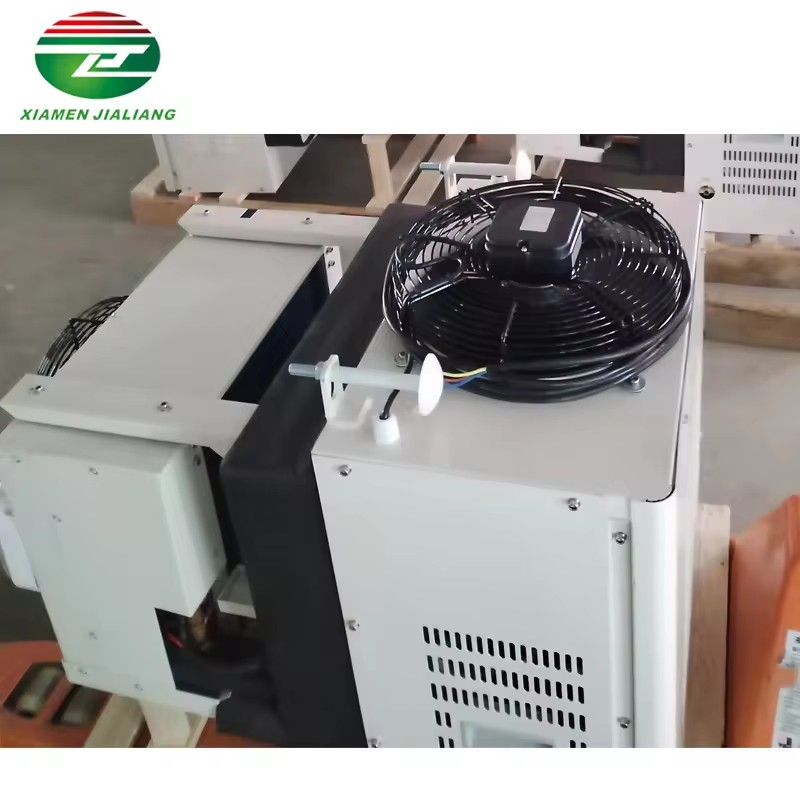What should be paid attention to when building a meat cold storage
Meat stored at temperatures between -18 degrees Celsius to -23 degrees Celsius can last longer
What should be paid attention to when building a meat cold storage
Meat cold storage is used to store meat, such as fish, beef, pork and so on. Under normal circumstances, the temperature of the cold storage is between minus 18 and minus 23 degrees Celsius, and the freezing temperature of special high-grade meat is relatively low, such as high-grade beef, tuna, etc. The freezing temperature is minus 35 degrees.
If the cold room is intended for use in a slaughterhouse, it may also require the inclusion of a certain number of film pickling and refrigeration rooms.
Different types of meat have varying storage durations at specific temperatures:
1. In cold rooms set between 0-5 degrees Celsius, meat can usually be stored for approximately 3-5 days. This is suitable for fresh meat, especially when cold chain transport is necessary.
2. Meat stored at temperatures between -18 degrees Celsius to -23 degrees Celsius can last longer. For example, when stored at -18 degrees Celsius, meat can have a shelf life of approximately 6 months. If you wish to extend this storage duration further, you can opt for lower temperatures. However, it's essential to note that as the temperature decreases, the construction and operational costs of the cold room will also increase.
Key design points for a meat cold room include:
1.Refrigeration of Poultry
When dealing with chilled poultry, it's important to note that pork meat has a relatively rich muscle structure and is more susceptible to quality issues. Therefore, poultry meat should be vacuum-sealed and transported under low-temperature conditions, typically below -18 degrees Celsius. This helps prevent issues like fat oxidation, dehydration, and spoilage.
2. Freezing Meat
For frozen meat, it is usually categorized according to customer preferences or the importing country's standards. Subsequently, the meat is packaged using sealed composite materials to prevent dehydration and quality loss due to drying. The packaged meat is then placed in cardboard boxes, ensuring secure closure and labeling. During freezing, care should be taken to avoid box deformation, as this can affect both appearance and the efficient use of storage space within the cold room.
3. Freezing Fish and Seafood
Fish and seafood are characterized by their high water content, proteins, fats, minerals, enzymes, and vitamins. They have a soft muscle structure and contain a significant amount of essential amino acids compared to poultry meat.
Xiamen Jialiang is a professional refrigeration cold room design company that provides various low-temperature facilities and cold room designs, such as chicken cold rooms and seafood cold rooms. Different customizations may have varying prices. We can accommodate any cold room size and requirements. If you would like to learn more about our cold room products for meat storage, please contact us. Our website is www.coldroomjl.com. We look forward to working with you!








